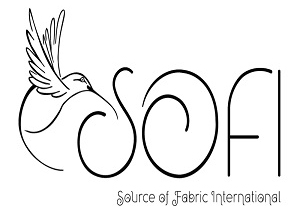Ordering fabric wholesale can be a game-changer for designers, crafters, and small business owners. With the right approach, it opens doors to cost savings and a wider selection of materials. Whether you’re creating custom garments or crafting unique home décor, knowing how to effectively source fabric in bulk is crucial.
Understanding the ins and outs of wholesale fabric purchasing not only helps in maximizing profits but also ensures access to high-quality materials. From finding reliable suppliers to negotiating prices, each step plays a vital role in building a successful fabric ordering strategy. This guide will equip you with the essential tips and insights needed to streamline your wholesale fabric purchasing experience.
Understanding Wholesale Fabric
Wholesale fabric is a term used to describe large quantities of fabric sold at reduced prices. This allows designers, crafters, and small business owners to purchase materials more economically. By understanding the basics, buyers can make informed decisions to benefit their projects.
What Is Wholesale Fabric?
Wholesale fabric refers to fabric sold in bulk, typically at a lower cost than retail. It may come from manufacturers or distributors who supply a variety of types, styles, and colors. Using wholesale options enables buyers to access materials not readily available at retail level.
Benefits of Ordering Wholesale Fabric
Ordering wholesale fabric offers multiple advantages:
- Cost Savings: Buying in bulk reduces the price per yard, allowing for significant cost reductions.
- Variety: Wholesale suppliers often carry a wider selection of styles and materials, catering to diverse needs.
- Consistency: Purchasing from the same supplier ensures color and quality uniformity across different batches.
- Flexibility: Lower prices allow businesses to experiment with new designs without a significant financial investment.
- Relationships: Establishing connections with suppliers can lead to better terms and services over time.
Understanding these aspects leads to informed choices and improved outcomes in fabric sourcing.
Identifying Your Fabric Needs
Understanding fabric needs is key for effective ordering. Buyers should consider what fabrics align with their projects.
Types of Fabrics Available
Fabrics come in a variety of types. Common options include:
- Cotton: Versatile and widely used, suitable for clothing and home décor.
- Polyester: Durable and wrinkle-resistant, good for a range of applications.
- Silk: Luxurious and lightweight, ideal for formal garments.
- Linen: Breathable with a natural texture, preferred for warm climates.
- Wool: Warm and insulating, often used in outerwear and knitwear.
Buyers might look for specialty fabrics too, like bamboo or spandex, depending on their specific needs.
Calculating the Quantity Required
Calculating fabric quantity ensures buyers order enough for their projects. To estimate, follow these steps:
- Measure the Pattern: Determine the size and cut layout of the pattern.
- Consider Extra Fabric: Account for mistakes or adjustments, adding an extra 10-15%.
- Assess the Width: Fabrics vary in width; calculate based on the available widths.
- Consult Suppliers: Some suppliers provide guidance or calculators for estimating needs.
Accurate calculations streamline the ordering process and reduce waste.
Finding Reliable Wholesale Suppliers
Sourcing reliable wholesale suppliers is crucial for successfully ordering fabric in bulk. This process ensures access to quality materials at competitive prices.
Researching Suppliers Online
Start by using search engines to find wholesale fabric suppliers. Look for websites that specialize in fabrics and review their offerings. Utilize online marketplaces where wholesalers list their products. Explore social media platforms for recommendations and customer reviews. Building a list of potential suppliers is essential for comparison.
Evaluating Supplier Reputation
Assess supplier reputation by checking reviews from previous customers. Look for feedback on quality, service, and delivery times. Reach out to contacts in the industry for recommendations. Consider suppliers who have been in business for a while, as this often indicates reliability. Verify if suppliers are members of industry associations to gain further credibility.
Placing Your Order
Ordering fabric wholesale requires clear communication and strategic negotiation. By following these steps, buyers can secure the best deals and ensure a smooth purchasing process.
How to Communicate Your Order
Start by being clear and concise about your needs. Specify the fabric type, color, and quantity. Include any additional details relevant to the order, such as the required width and finish. Use straightforward language and avoid ambiguity to prevent misunderstandings.
Confirm all details in writing. An email summarizing the discussed terms serves as a helpful record for both the buyer and supplier. Ask questions if uncertainties arise, ensuring all aspects are covered before placing the order.
Tips for Negotiating Prices
Research market prices before negotiations. This information helps buyers understand fair pricing and prepares them to make reasonable offers.
Offer bulk purchase incentives. Fewer but larger orders often lead to better prices. Request discounts for larger quantities, and mention potential future orders to create a long-term relationship with the supplier.
Being open to alternative materials or fabric weights can also provide negotiation leverage. Suppliers may offer similar options at lower prices.
When discussing prices directly, maintain a polite yet assertive tone. Be willing to walk away if the terms don’t meet expectations. This approach emphasizes the value of the buyer’s business and encourages better offers.
Managing Your Orders
Managing orders effectively ensures a smooth process when ordering fabric wholesale. Attention to detail and clear communication with suppliers play crucial roles.
Tracking Your Order Status
Tracking the order status helps buyers stay informed about delivery times and any potential delays. Most suppliers provide tracking numbers or status updates via email. It’s advisable to check the vendor’s website for shipping information or to contact customer service for assistance. Regularly monitoring order status reduces uncertainty and helps plan projects accordingly.
Handling Issues and Returns
Handling issues quickly prevents small problems from escalating. If a buyer receives the wrong fabric or has quality concerns, contacting the supplier immediately is vital. Keep records of all communications and order details to ensure a clear understanding of the issue. Most suppliers offer return policies; understanding these policies before placing an order provides clarity on the process. If a return is necessary, follow the required steps for returns and keep shipping receipts until the return is confirmed.
Source High-Quality Fabrics with Source of Fabric
Looking to streamline your projects with premium wholesale fabrics? At Source of Fabric, we offer unbeatable prices, a vast selection, and consistent quality for all your fabric needs. Whether you’re designing garments, crafting home décor, or stocking up for your business, we’ve got you covered.
Shop Wholesale Fabrics Today
Conclusion
Ordering fabric wholesale can significantly enhance a designer’s or crafter’s ability to create unique pieces while managing costs effectively. By understanding the nuances of the wholesale process and establishing strong relationships with suppliers, buyers can access a diverse range of materials that elevate their projects.
Effective negotiation and clear communication are essential to achieving favorable terms. By keeping meticulous records and being proactive in managing orders, individuals can ensure a smooth purchasing experience. Embracing these strategies not only leads to successful outcomes but also fosters a sustainable business model in the competitive fabric market.
Frequently Asked Questions
What are the benefits of ordering fabric wholesale?
Ordering fabric wholesale offers significant cost savings, a wider selection of materials, and consistent quality. It allows designers, crafters, and small business owners to access various styles and colors not typically available at retail. Additionally, purchasing in bulk fosters strong relationships with suppliers and provides flexibility for experimentation in projects.
How can I find reliable wholesale fabric suppliers?
To find reliable suppliers, research online using search engines, specialized fabric websites, and social media for recommendations. Evaluate supplier reputations by checking customer feedback, looking for industry endorsements, and considering suppliers with a long-standing market presence or membership in industry associations.
What factors should I consider when calculating fabric quantities?
When calculating fabric quantities, consider the project requirements, including pattern sizes and designs. Measure your patterns accurately, account for extra fabric for seams or errors, assess fabric widths, and consult suppliers for guidance to ensure you order the correct amount.
How do I negotiate prices for wholesale fabric?
To negotiate prices effectively, research market rates for similar fabrics, specify your bulk purchase goals, and be open to alternative materials. Maintain a polite yet assertive communication style during negotiations and be prepared to walk away if terms are unsatisfactory to encourage better offers from suppliers.
What should I do if there’s an issue with my fabric order?
If there’s an issue with your order, promptly communicate with the supplier to address the concern. Familiarize yourself with their return policies before placing an order. Keep records of communications and follow the outlined steps for returns to ensure a clear and efficient resolution process.


